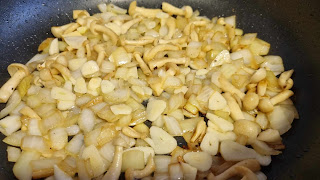We have to talk about secreto ibérico. In English this translates as Iberian Secret, and its name is not ironic. Like a lot of Spanish food, it has been overshadowed by a small collection of more commercial fare to feed the masses on the Costas: gazpacho, tortilla española, paella... but these are the Spanish equivalent of a carbonara or a pizza: they're so popular it's easy to find places that make them incredibly badly.
Secreto ibérico is a cut of meat somewhere around the shoulder from the black pata negra pig. Not to be confused with the duroc sort, it has blackened feet (pata = animal foot, negra = black) and is usually dark in colour. The breed can be classed as indigenous, considering it is probably related to those brought over by early mercantile sailors from the Levant about 2700 years ago.
But what makes the pata negra pig so special is it has the most splendid life: it is a government-protected creature that is granted 5 acres of forest per animal to be allowed to wander the primeval oak forests eating acorns, mushrooms, and the wild vegetation found in these most rural parts of Spain.
There are four designated areas where the true pata negra pig is raised:
The town of Jabugo in Huelva province close to the Portuguese border;
Guijuelo, near Salamanca, also near the Portuguese border;
Valle de los Pedrochos, to the north of Cordoba; and
The region of Extremadura, right next to Portugal.
So due to its utterly idyllic existence giving it a supple muscle tone and a slightly nutty flavour, the meat for cooking has a marbled Wagyu-style fat arrangement that makes it supremely tender, and is therefore highly prized by any restaurant in Spain that doesn't cater to the masses. The ham from acorn-fed pigs is cured for up to four years, and they are hung up with their black trotters still attached to prove they are from pata negra pigs.
Ordinary pork is notoriously easy to overcook until it's as tough as a shoe sole, but secreto ibérico stays tender longer, allowing for it to be nicely browned on the outside, burnt even, and still retain its succulence on the inside, making it a barbecue essential. It goes well with many types of food, such as this delightful combination from a restaurant in Mestalla called El Rinconet (see the photo below), which I recommend very highly.
The cut of meat is generally a little like a beef flank steak and it's often cut into strips to make it easier to handle.
But the recipe I have for you is another rice one - it's very similar to the last: I think I'm going through a rice phase. It is so simple and yet so delicious, you will travel for miles just to find some secreto ibérico for dinner every now and then!

Ingredients:
350g plain rice
450 g to 500 g of secreto ibérico, cut into strips against the fibres
1 large succulent onion
250 g shimeji mushrooms
6 to 8 cloves of garlic
1 litre of chicken stock
As many peas as you like
You are welcome to add diced carrots, green beans, or any other appropriate vegetable
Salt, ground black pepper to taste
Instructions:
Cut up your vegetables and slice the meat into strips against the grain of the muscles.
Fry the meat on a medium-high heat in some olive oil until they are sealed, adding salt and pepper.
Remove them and place them on the side for a while.
Sweat the onion and mushrooms on a medium heat, add the garlic and whatever other vegetables you want, and mix them together well stirring all the time. Don't season with too much salt yet.
Add the rice, let it fry for a minute, stir continuously, then start pouring in the chicken stock. Once bubbling, turn the heat down and add more stock every now and then to keep the contents from drying up and burning.
After 5 or 6 minutes, put the secreto back in and mix all the ingredients well.
From the moment the stock goes in, you will need between 12 and 15 minutes until ready to eat.





No comments:
Post a Comment